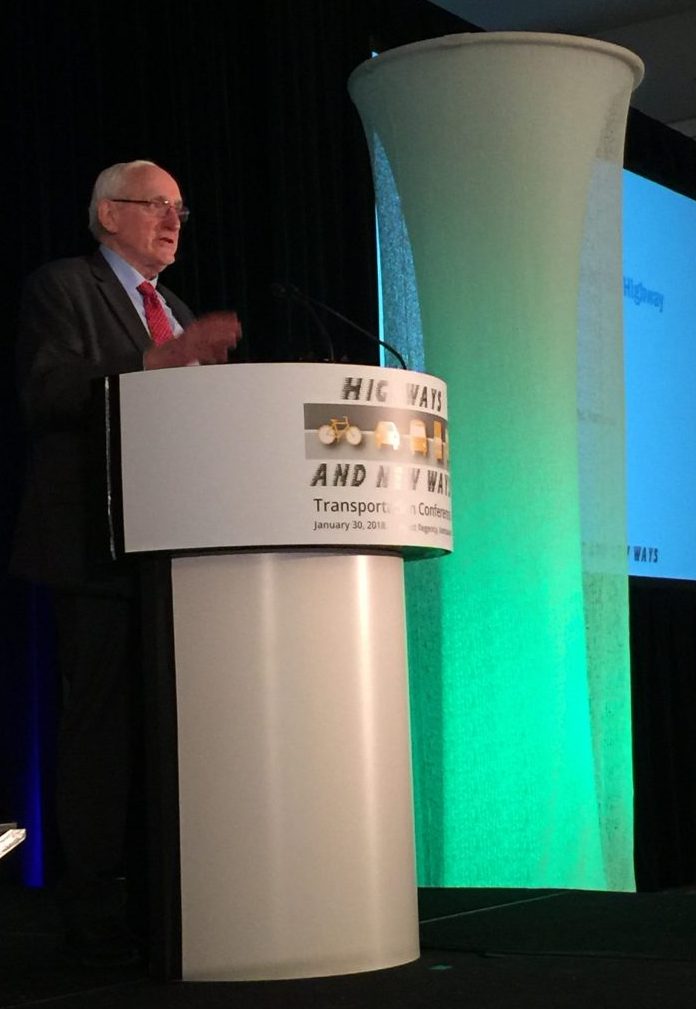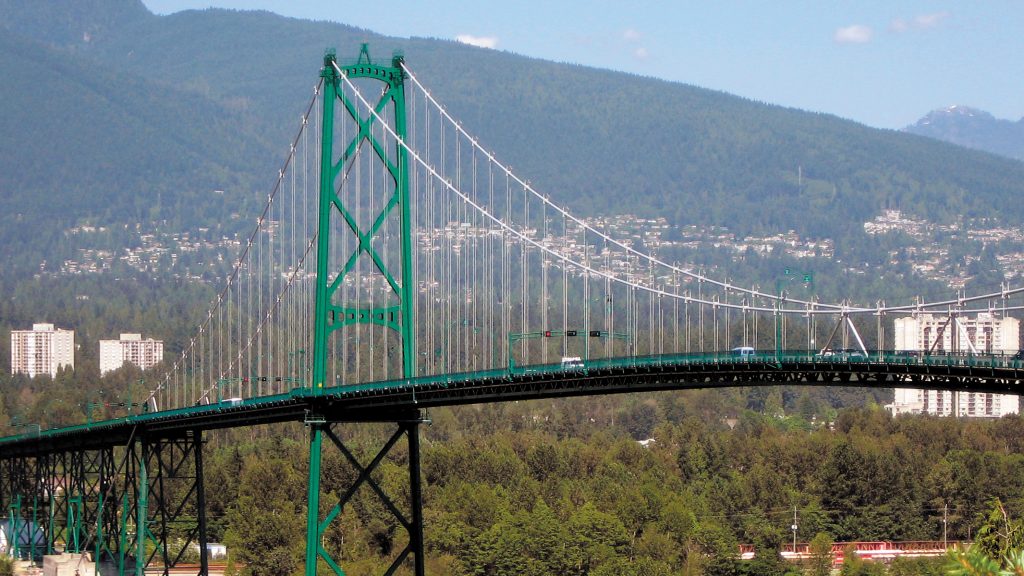The past, present and future of British Columbia’s transportation infrastructure took the spotlight recently at the Association of Consulting Engineering Companies – British Columbia’s (ACEC-BC) 2018 Transportation Conference.
Government veteran Dan Doyle, the former B.C. deputy minister of transportation and former vice-president of construction for VANOC, delivered a keynote titled, A Perspective on the B.C. Highway system, where he looked at the evolution of the B.C. highway system and the policies that created it.
Before development of a provincial highway network, Doyle said, roads were built in a more or less ad-hoc fashion.
“A lot of structures were built hanging cliffside and you laid on the horn as you took a turn while driving through B.C.’s mountains,” Doyle said.
Public consultation was minimal and there was little focus on the environmental impacts of roadbuilding.
“In the old days, we just blundered forward, using pesticide to clear weeds which resulted in chemicals in the water system,” Doyle said, noting then-premier Mike Harcourt pushed to improve the province’s environmental record. “Today, everything we do, a lot of it goes into protecting the environment.”
Significant capital expansion occurred in the 1970s and ‘80s, he said. Road and bridge maintenance was privatized and an avalanche program was developed along with technology to manage and operate the highway system.

“From my perspective, privatization was a political agenda item, but it turned out to be the best thing to happen to us,” Doyle said.
Previously, he explained, the highway system would have to compete with other branches of government for maintenance funds and “health care would of course win out over dump trucks every time.”
Privatization resulted in relieving that pressure, he said, and introduced consistent management that allowed for a prediction model for the highways.
The 1990s were marked by the formation of TransLink, the construction of the Millennium Line Skytrain extension and the rehabilitation of the Lions Gate Bridge.
The 2000s, Doyle noted, marked “dedicated funding for a transportation plan for the first time ever.”
“If you look back at what’s happened from the 1950s to today, we’ve spent about $400 billion (in today’s dollars) to build our system,” he said.
The road ahead for BC Highways, Doyle said, involves not repeating past mistakes.
“Let’s continue to invest the right amount in rehabilitation, informed by good engineering and economics,” he said.
Key to staying competitive is goods movement, Doyle said. The Lower Mainland has no more room for new highway corridors and demand is exceeding supply.
The economy depends on trade and “we have ports all the way down the West Coast of North America who want to take our goods,” he said.
Trucks could move goods in off-peak hours, Doyle added, but there should be dedicated goods movement lanes and “they should be electrified.”
“In fact, it is necessary to move not only to electric but to driverless vehicles,” Doyle said.
“But the big question is, how do you pay for this?” Doyle asked. “There’s only one source for that, and that’s you and I and our fellow taxpayers.”
While taxes are one solution, he added, costs can also be reduced by improving the system through technological efficiencies. Doyle appealed to the audience of engineers as prime candidates to enact such change.
“You more than anyone else can use your experience, technology and ideas to improve things,” Doyle said. “But you can’t add to infrastructure, so use your skills and ability to innovate to help the politicians out of this. It can be solved.”











Recent Comments